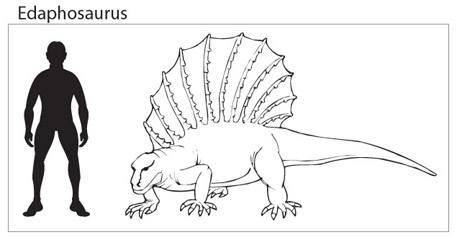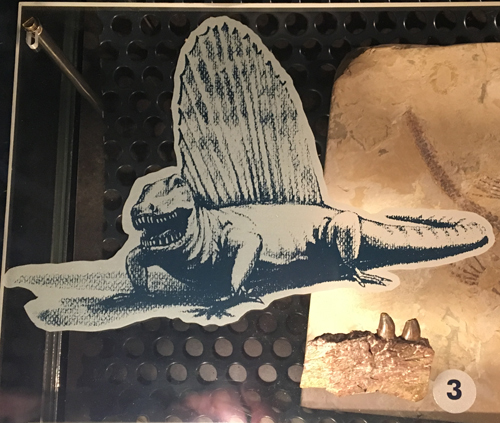Collapse in Tropical Forests Gave Early Reptiles Their Big Break
Global Warming Gave Early Reptiles the Edge in the Carboniferous
Scientists have concluded that global warming gave Carboniferous reptiles a competitive advantage.
A team of British and Canadian scientists writing in the scientific journal “Geology” have stated that the sudden and dramatic collapse of the world’s equatorial forests in the Carboniferous allowed Reptilia to rapidly diversify. It was the reptiles that went onto dominant terrestrial habitats, giving rise eventually to the dinosaurs, birds and of course the mammals.
Carboniferous Reptiles
The rapid diversification of the reptiles during the Carboniferous Period (360 million years to approximately 299 million years ago), was identified by the research team as they investigated fossil evidence from a number of globally important fossil locations including the UNESCO World Heritage site at Joggins, Nova Scotia (Canada). The strata at this site were laid down approximately 313 million years ago. They represent a Carboniferous forest that was prone to wildfires, (high oxygen levels in the Carboniferous). Fossils of some of the first egg-laying, lizard-like animals have been found preserved in the hollows of ancient trees.
The research team have concluded that the collapse of the coal forest ecosystems created remnant pockets of rain-forest habitat in which species adapted in relative isolation, ultimately strengthening the reptilian gene pool and aiding diversification.
University of London, palaeontologist Howard Falcon-Lang comments in a summary of the findings:
“Climate change caused rain-forests to fragment into small “islands” of forest. This isolated populations of reptiles and each community evolved in separate directions, leading to an increase in diversity.”
Co-author, Mike Benton of Bristol University stated this process was:
“A classic ecological response to habitat fragmentation. You see the same process happening today whenever a group of animals becomes isolated from its parent population.”
Lead author of the study, Canadian scientist Sarda Sahney, also based at Bristol University commented:
“It is fascinating that even in the face of devastating ecosystem-collapse, animals may continue to diversify through the creation of endemic populations.”
She went onto add a warning with regards to the fragility of the Amazon rain-forest given the current concerns with global climate change stating:
“Life may not be so lucky again in the future, should the Amazon rain-forest collapse.”
Joggins Fossil Cliffs
The Joggins Fossil Cliffs in Nova Scotia as well as a number of other fossil sites from around the world provided the research team with an analysis regarding amniotes diversification. An amniote is a vertebrate, whose embryos develop within a special protective membrane – the amnion. The group includes some of the earliest tetrapods, as well as reptiles, birds, mammals and ourselves.
One of the most remarkable features of the Joggins site is the presence of numerous tree-sized stumps and trunks (mainly Lepidodendron remains). Inside some of these, can be found the fossilised remains of the oldest known egg-laying amniotes genera such as Hylonomus and Palaeothyris, primitive reptiles.
Howard Falcon-Lang summarised by saying:
“In a sense, the whole story starts at Joggins with the origin of reptiles. When reptiles first evolved, they were adapted to dry conditions, because reptiles lay eggs with hard shells rather than spawn in ponds like frogs. However, when rain-forests collapsed around the tropical belt, the reptiles were ready and got their big break rapidly diversifying.“
Layers of charcoal preserved in the strata provide evidence of extensive forest fires that plagued the area. Perhaps these primitive, early reptiles sought shelter in the tree stumps during a fire, but were suffocated. As these animals were small, most less than 20 centimetres long, it is possible that these tree stumps acted as natural traps and helped to preserve the remains of these insectivores.
The diversification of the reptiles, led to the establishment of large, herbivorous vertebrates in the Permian Period, animals such as Edaphosaurus and other forms of advanced synapsids – animals that would eventually give rise to Mammalia and over many millions of years, lead to the evolution of apes and humans.
An Illustration of Edaphosaurus

Picture credit: Everything Dinosaur
The illustration shows a scale drawing of the edaphosaurid reptile Edaphosaurus. By the Middle Permian herbivorous reptiles such as Edaphosaurus had grown into 3 metre long giants, preyed upon by other huge reptiles. Complex reptilian based food chains had formed, and, according to this new study, the diversity of the reptiles was as a result of the isolation of groups of animals as area of rain-forest shrunk.
Pelycosaurs Thrived During the Permian

Picture credit: Everything Dinosaur
For scale models of pelycosaurs and for replicas of early archosaurs: CollectA Deluxe Prehistoric Life Models and Replicas.

